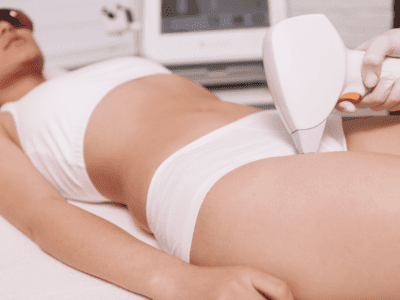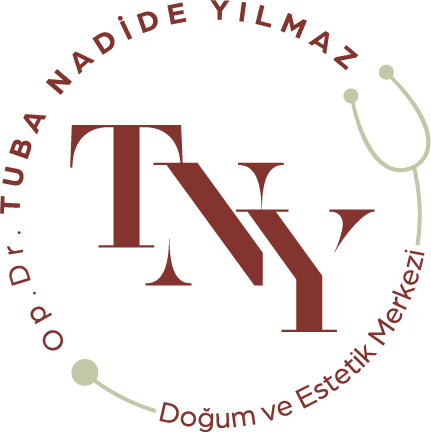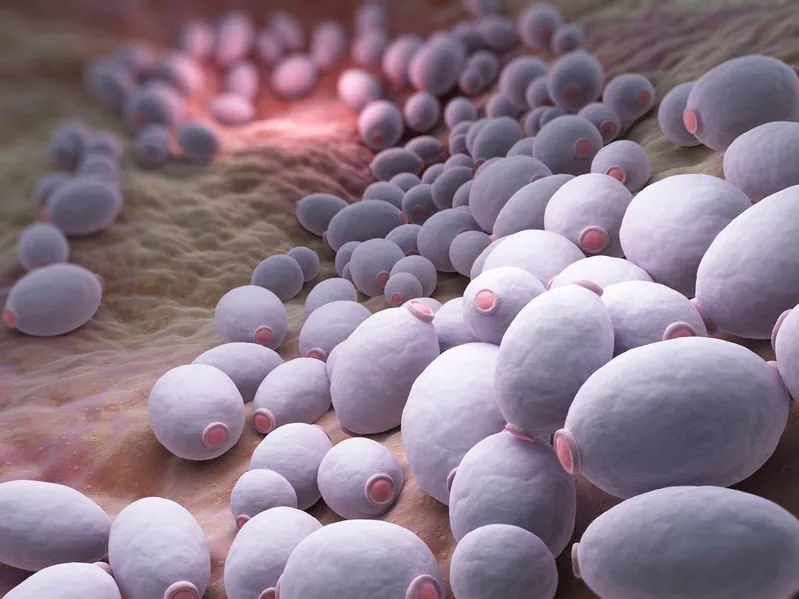Fungal infections are a common health problem that occurs when the skin, nails, hair or other parts of the body become infested with fungi. Fungal infections can occur in both men and women and can develop depending on many factors such as age, gender, hygiene, immune system, diet, lifestyle. Fungal infections usually cause uncomfortable symptoms such as itching, redness, crusting, flaking, discoloration, odor, pain, burning and can lead to serious complications if left untreated.
There are various methods for treating fungal infections. These include traditional and alternative options such as topical medications, oral medications, herbal remedies, home remedies, surgical intervention. However, each of these methods has limitations in terms of effectiveness, safety, side effects, cost and applicability. In particular, resistant fungal infections, i.e. fungal infections that have developed resistance to drugs or other treatments, are a difficult and stubborn problem to treat.
In this article, we will examine laser therapy, a modality that has gained popularity in recent years in the treatment of resistant fungal infections, with impressive results. Laser therapy is a non-invasive, painless, safe and effective treatment that involves the use of concentrated laser beams that target and destroy fungal infections. Laser therapy has fewer side effects than traditional medications or surgery and provides more lasting results in less time. Laser therapy can be used for different types of fungal infections, such as nail fungus and vaginal fungus.
In this article, we will explain in detail how laser treatment works, its advantages, disadvantages, cost, procedure, effectiveness, side effects, eligibility criteria and what to do afterwards. You will also find the most frequently asked questions and answers about laser treatment. Read on to find out more about laser treatment.
View this post on Instagram
Introduction
Fungal infections are a common health problem that occurs when the skin, nails, hair or other parts of the body become infested with fungi. Fungal infections can occur in both men and women and can develop depending on many factors such as age, gender, hygiene, immune system, diet, lifestyle. Fungal infections usually cause uncomfortable symptoms such as itching, redness, crusting, flaking, discoloration, odor, pain, burning and can lead to serious complications if left untreated.
There are various methods for treating fungal infections. These include traditional and alternative options such as topical medications, oral medications, herbal remedies, home remedies, surgical intervention. However, each of these methods has limitations in terms of effectiveness, safety, side effects, cost and applicability. In particular, resistant fungal infections, i.e. fungal infections that have developed resistance to drugs or other treatments, are a difficult and stubborn problem to treat.
What are Fungal Infections?
Fungal infections are a common health problem that occurs when the skin, nails, hair or other parts of the body become infested with fungi. Fungi are microscopic creatures and there are many different types in nature. Some fungi are normally present in the human body and are harmless. However, some fungi can multiply and cause infection in cases such as weakening of the body's defense system, skin damage, exposure to humid and hot environments, antibiotic use, diabetes, obesity, pregnancy, menopause.
The most common types of fungal infections are:
- Nail fungus (Onychomycosis): Nails are infected by fungi. The nails thicken, turn yellow, break, become deformed and can be painful. Nail fungus is more common in toenails, but can also affect fingernails. Nail fungus is more common in the elderly, diabetics, people with a weak immune system, people who do not pay attention to foot hygiene, people who wear tight and damp shoes, people who have manicures or pedicures, and people who eat their nails.
- Vaginal fungus (vaginal candidiasis): Infection of the vagina by fungi. Vaginal yeast is a problem that about 75% of women experience at some point in their lives. Vaginal yeast causes symptoms such as itching, discharge, redness, swelling, swelling, burning, pain, discomfort during urination or sexual intercourse. Vaginal fungus can be triggered by factors such as pregnancy, antibiotic use, diabetes, immune system weakness, stress, hormonal changes, excessive cleaning, wearing synthetic underwear, using condoms with spermicide.
- Athlete's foot (Tinea pedis): Infection of the feet by fungi. Athlete's foot can appear between the toes, on the soles or on the nails. Athlete's foot causes symptoms such as itching, redness, crusting, cracking, bad odor, burning and pain. Athlete's foot can be transmitted in humid and hot environments, sweaty feet, narrow and airtight shoes, and shared items such as towels, socks and shoes.
- Ringworm (Tinea capitis): Infection of the scalp by fungi. Ringworm causes symptoms such as hair loss, redness, scaling, itching, purulent blisters, swelling of the lymph nodes. Ringworm usually occurs in children and can be transmitted from animals, people or objects.
- Underarm fungus (Tinea axillaris): Infection of the armpit by fungi. Underarm fungus causes symptoms such as redness, itching, crusting, wetness, bad odor and pain. Underarm fungus can develop due to factors such as sweating, excessive hair growth, tight clothing, deodorant use, lack of hygiene.
- Inguinal fungus (Tinea cruris): Infection of the groin area by fungi. Inguinal fungus causes symptoms such as redness, itching, crusting, burning and pain. Inguinal fungus is usually seen in men and can be caused by factors such as sweating, tight clothing, obesity, diabetes, immune system weakness, infection from athlete's foot.
What are the Types of Laser Treatment?
Laser therapy can be classified according to the different types of lasers used to treat fungal infections. The types of lasers used in laser therapy are:
- Nd:YAG laser: The Nd:YAG laser is a type of laser that produces infrared beams with a wavelength of 1064 nm. The Nd:YAG laser is the most commonly used laser type for the treatment of nail fungus. The Nd:YAG laser penetrates under the nail plate, heating and killing the fungus. The Nd:YAG laser can be applied once or in several sessions. Nd:YAG laser has a success rate of up to 80% in the treatment of nail fungus.
- CO2 laser: CO2 laser is a type of laser that produces infrared beams with a wavelength of 10,600 nm. CO2 laser is the most commonly used laser type in vaginal yeast treatment. CO2 laser stimulates the vaginal tissue, increases collagen production, improves blood flow, maintains pH balance and inhibits the growth of fungi. CO2 laser can be applied as a single treatment or in several sessions. CO2 laser has a success rate of up to 90% in vaginal yeast treatment.
- Diode laser: A diode laser is a type of laser that produces infrared beams with a wavelength of 800-980 nm. Diode laser is a type of laser that can be used in the treatment of both nail fungus and vaginal fungus. The diode laser heats and kills the fungus without damaging the surrounding tissues. Diode laser can be applied as a single treatment or in several sessions. Diode laser has a success rate of 70-85% in the treatment of fungal infections.
Who is Suitable for Laser Treatment?
Laser therapy is a suitable method for treating fungal infections. Laser therapy can be used for different types of fungal infections, such as nail fungus and vaginal fungus. Laser treatment has fewer side effects than traditional medications or surgery and provides more lasting results in a shorter period of time. Laser treatment can also prevent recurrence of yeast infections.
Who is suitable for laser treatment? People with the following conditions are suitable for laser treatment:
- Those with resistant fungal infections: Resistant fungal infections, i.e. fungal infections that have developed resistance to medications or other treatments, are a difficult and stubborn problem to treat. Laser therapy involves the use of concentrated laser beams that target and destroy resistant fungal infections. Laser therapy can completely eliminate or significantly reduce resistant fungal infections. Laser treatment is considered an effective alternative for people with resistant yeast infections.
- Allergic to medicines: People who are allergic to medicines cannot use topical or oral medicines used to treat fungal infections. People who are allergic to drugs may experience allergic reactions such as itching, redness, blisters, swelling, shortness of breath, shock on the skin or body as a result of drug use. Laser treatment does not require the use of medication and does not cause allergic reactions. Laser treatment is considered a safe option for people who are allergic to medications.
- Those who cannot take medicines: People who cannot take medicines cannot use topical or oral medicines used to treat fungal infections. People who cannot take medicines may damage organs such as the liver, kidneys, stomach, intestines, cause serious side effects, and interact with other medicines. People who cannot take medication may be included in groups such as pregnant women, breastfeeding, children, the elderly, diabetics, those with weak immune systems, and those with chronic diseases. Laser treatment does not require the use of medication and does not damage organs, does not cause serious side effects, and does not interact with other medications. Laser therapy is considered an effective option for people who cannot take medication.
- Not suitable for surgery: People who are not suitable for surgery cannot have the surgical intervention used to treat fungal infections. People who are not suitable for surgery may experience problems such as pain, bleeding, infection, scarring as a result of surgical intervention, may be allergic to anesthesia, may cause complications, may be expensive, may have aesthetic concerns. People who are not suitable for surgery may be included in groups such as those with advanced, common or resistant fungal infections, pregnant women, breastfeeding women, children, the elderly, diabetics, those with weak immune systems, and those with chronic diseases. Laser treatment does not require surgical intervention and does not cause problems such as pain, bleeding, infection, scarring, does not require anesthesia, does not cause complications, is not expensive, does not cause aesthetic concerns. Laser treatment is considered a suitable option for people who are not suitable for surgery.
Conclusion
Fungal infections are a common health problem that occurs when the skin, nails, hair or other parts of the body become infested with fungi. Fungal infections can occur in both men and women and can develop depending on many factors such as age, gender, hygiene, immune system, diet, lifestyle. Fungal infections cause unpleasant symptoms such as itching, redness, crusting, flaking, discoloration, odor, pain, burning and can lead to serious complications if left untreated.
There are various methods for treating fungal infections. These include traditional and alternative options such as topical medications, oral medications, herbal remedies, home remedies, surgical intervention. However, each of these methods has limitations in terms of effectiveness, safety, side effects, cost and applicability. In particular, resistant fungal infections, i.e. fungal infections that have developed resistance to drugs or other treatments, are a difficult and stubborn problem to treat.
In this article, we examine laser therapy, a method that has gained popularity in recent years in the treatment of resistant fungal infections and has produced impressive results. Laser therapy is a non-invasive, painless, safe and effective treatment method that involves the use of concentrated laser beams that target and destroy fungal infections. Laser treatment has fewer side effects than traditional medications or surgery and provides more lasting results in less time. Laser therapy can be used for different types of fungal infections, such as nail fungus and vaginal fungus.
In order to provide detailed information about laser treatment, we have explained how laser treatment works, its advantages, disadvantages, cost, procedure, effectiveness, side effects, eligibility criteria and what to do afterwards. We have also presented the most frequently asked questions and answers about laser therapy. Laser therapy is considered an effective alternative for the treatment of fungal infections.
Thank you for reading our article. We hope we have answered your questions about laser treatment and helped you in the treatment of yeast infections. If you would like more information about laser treatment or would like to have laser treatment, you can consult your doctor or call your nearest laser treatment center. Stay healthy and happy. ????
Frequently Asked Questions
- How long does laser treatment last?
The laser treatment depends on the size of the infected area, the severity of the fungal infection and the type of laser treatment. Usually, the laser treatment lasts between 10 and 30 minutes. The laser treatment can be done in one session or in several sessions. The laser treatment depends on the number of sessions. Usually, the laser treatment is completed between 2 and 4 sessions. Laser treatment varies according to the session interval. Generally, laser treatment is interspaced between 2 to 4 weeks between sessions.
- Does laser treatment hurt?
Laser treatment causes little or no pain. While laser treatment destroys the fungus, it does not damage surrounding tissues or cause pain. Laser treatment usually does not require anesthesia. Laser treatment only creates a slight sensation of heat or tingling in the infected area. Laser treatment depends on the pain threshold. Some people may not feel the laser treatment at all, while others may find it uncomfortable. To reduce the pain of laser treatment, it may be helpful to apply a cold compress to the infected area, take painkillers and communicate with the doctor who is performing the laser treatment.
- How much does laser treatment cost?
The cost of laser treatment depends on the size of the infected area, the severity of the fungal infection, the type of laser treatment, the experience of the doctor performing the laser treatment, the location of the clinic where the laser treatment is performed. The cost of laser treatment depends on insurance coverage. Usually, laser treatment is not covered by insurance and is paid for by the person themselves. The cost of laser treatment depends on additional costs. Usually, laser treatment may require additional costs, such as medications to be applied to the infected area, materials to be used to protect the infected area, products to be used to clean the infected area.
- Is laser treatment safe?
Laser treatment is a safe method. Laser treatment has fewer side effects than conventional medication or surgery. While laser treatment destroys the fungus, it does not damage surrounding tissues or cause pain. Laser treatment usually does not require anesthesia and is completed in a short time. Laser treatment can also prevent recurrence of yeast infections. The safety of laser treatment varies depending on the type of laser treatment, the location of the infected area, the condition of the infected area, the experience of the doctor performing the laser treatment, the instructions to be followed after the laser treatment. It may be helpful to take precautions before and after laser treatment, such as applying a cold compress to the infected area, taking anti-inflammatory medications, keeping the infected area clean and dry, protecting it from the sun, applying antibiotic cream, taking antihistamines, applying pressure to the infected area.









